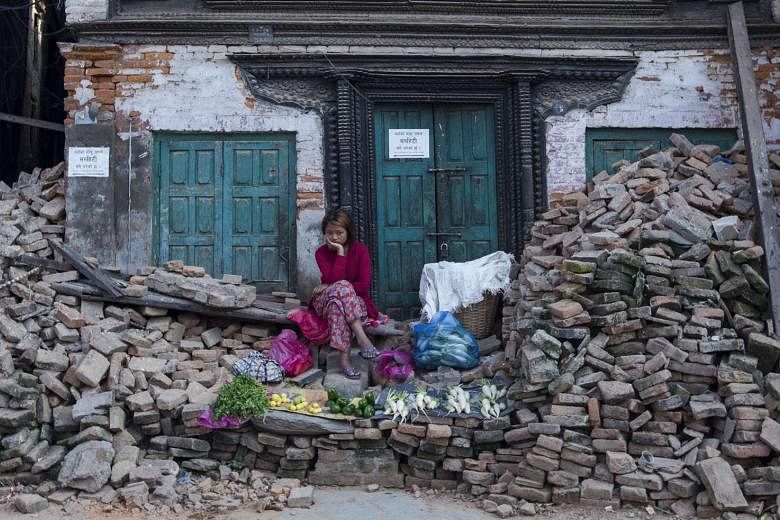MANEBHANJYANG (Nepal) • As snow works its way down from the mountain peaks and night-time temperatures plunge, the Nepalese village of Manebhanjyang is showing few signs of recovery from the April 25 temblor that flattened or damaged beyond repair about four-fifths of its buildings. Other cities and villages across Nepal share the same fate.
While billions of dollars have been pledged to rebuild the country, little has been spent so far amid a long and distracting fight over a new Constitution. With winter approaching, aid workers are warning of a humanitarian crisis.
"There are many humanitarian needs not met yet," said Mr Jamie McGoldrick, the resident coordinator of the United Nations for Nepal. "The biggest of those challenges is shelter and winterisation."
Delivery of blankets, warm clothes and insulation materials to remote regions has been hampered because paths have been washed away by landslides caused by the quake and monsoons. Villages at the highest altitudes may not have enough food to last the winter, he said.
Manebhanjyang's plight is all too typical across Nepal in the aftermath of the earthquake, which killed more than 8,000 people and displaced about three million.
Manebhanjyang, a village of 500 people located about 97km south- west of Kathmandu, has been without piped water since its supply was severed. Farmers have fashioned shelters from the wreckage of their homes, draping tarps over salvaged wood and crumbled walls.
When officials from the Ministry of Education assessed the damage to a school there - a structure of sagging mud brick walls and twisted, corrugated iron roofing now filled with dust and rubble - they suggested the villagers find a charity to fund its reconstruction. "We're not expecting to hear anything else," said villager Omnath Timilsena.
Nepal's planning commission has estimated that earthquake reconstruction will take five years to complete, and at a cost of US$6.7 billion (S$9.4 billion).
On June 25, at the International Conference on Nepal's Reconstruction in Kathmandu, foreign governments and international aid bodies pledged a total of US$4.4 billion in grants and soft loans to assist in the recovery. The then prime minister Sushil Koirala assured donors that the uses of the funds would be disclosed periodically to "maintain transparency". More than three months later, the Nepali administration has not completed arrangements even to receive the promised money, much less spend it.
In the months after the earthquake, the social and political maelstrom surrounding the drafting of the country's long-awaited but bitterly divisive charter distracted leaders from the reconstruction effort. The Constitution, adopted on Sept 20, restructures the country into seven provinces that some ethnic communities say will weaken their political clout.
Since early August, at least 40 people have been killed in strikes and bloody clashes between protesters and police. The violence suspended economic activity in parts of the country, further slowing reconstruction efforts.
Mr Govind Raj Pokharel, the vice- chairman of Nepal's planning commission and the head of the National Reconstruction Authority, the agency formed to rebuild the county, has said the government erred in prioritising the Constitution over recovery efforts.
Officials have justified their wrangling, saying the political and administrative overhaul would create greater stability, benefiting reconstruction in the long term.
Mr Pokharel acknowledged that the government's response had been slow but added that "some technical preparations are going on". The government is unlikely to start spending the US$4.4 billion in foreign grants and loans until early next month, he said, because of delays in approving aid distribution, the focus on the Constitution and concerns about starting restoration work during the summer monsoon.
"But I hope although it has been delayed, we can make up this delay," he added.
NEW YORK TIMES

